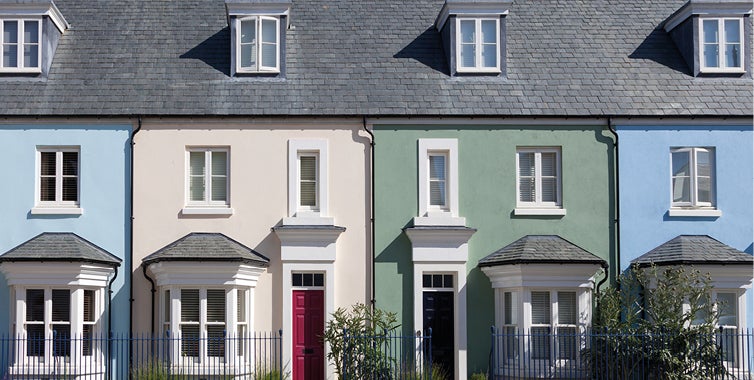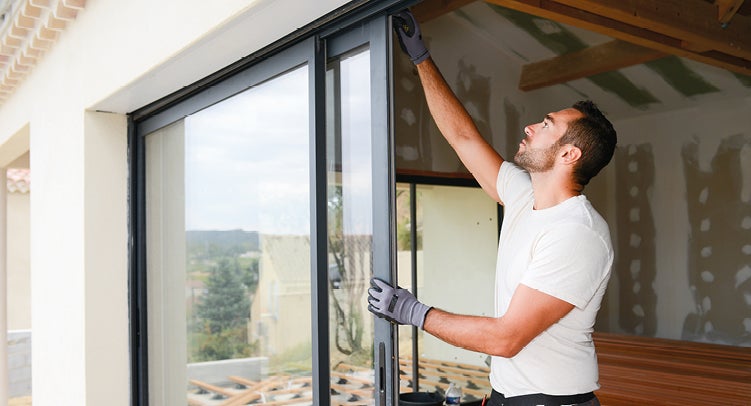The A-G guide to BER Certs explained in plain English
A Building Energy Rating (BER) certificate indicates your home’s energy performance on a grading scale, similar to the energy label for household appliances that indicates the level of energy consumption by an appliance.
The cert generally rates the energy performance of your home on a scale of A-G.
A-rated homes are regarded as the most energy-efficient ones, and they also benefit from the lowest energy bills. At the opposite end of the scale, G-rated homes are the least energy-efficient with very high energy bills.
Since 2007, a BER certificate is mandatory for all the buildings being constructed, offered for rent or sale in Ireland. In conjunction with Building Regulations for new homes and homes where significant upgrades are planned ,This ensures that all new dwellings are being developed and built in a way that incorporates energy-efficient designs, materials, and appliances in line with the Programme for Government's sustainability objectives.
When someone rents a specific home, they’re in a position to estimate their energy bills based on the home’s BER rating. When in the market for buying a house, potential buyers can also project energy bills based on the home’s BER rating. This essentially means that having a high BER rating greatly improves the value of your home.
A BER certificate is usually valid for up to 10 years, given that there are no material changes to a home that could lead to significant changes in energy performance. A provisional BER cert, which is usually derived from a plan of the unbuilt home, has a maximum validity of 2 years.

This guide will help you better understand the concept of BER certificates in detail, outlining the reasons why you might aspire to having a better BER rating for your home and explaining some common ways of improving your BER to ultimately save you money, reduce your home's carbon emissions, making it more comfortable and boosting its value.
How is a BER calculated?
A home’s BER is calculated using bespoke software called DEAP (Dwelling Energy Assessment Procedure). The software automatically calculates the energy losses for the dwelling which is delivered as a BER Energy rating.
The process usually involves a BER assessor who inspects and surveys your home. An assessor may need about 30 minutes to an hour or so, depending on the size of your home. During the inspection, an assessor will look at different elements of your property, measuring the efficiency of its features and ratings of comparable properties and home appliances.
The inspection takes into account different aspects of your home such as; type of heating systems, whether your home is properly insulated or not, the quality of your windows, your home’s space and volume, the radiators, and other energy-saving measures.
The calculation process also considers the number of people who are likely going to occupy a building, with the score is based on the average number of occupants in buildings of a similar capacity and size. BER assessments are normally undertaken by SEAI-registered BER assessors, a list of which you can find on the SEAI's public database.
The energy performance of a home is usually expressed as follows;
- The primary energy use per unit floor area per year (kWh/m2/yr) represented on an A to G scale.
- The associated carbon dioxide (CO2) emissions in kgCO2/m2/yr.
It should also be noted that a BER does not cover electricity used for other purposes other than heating, pumps, fans, and lighting. This means that a BER does not consider energy consumed through domestic activity such as cooking, refrigeration, laundry and entertainment.
The cost of a BER certificate
The cost of a BER certificate depends on the size of your home and the time taken by an assessor to complete inspection.

The average cost of a BER cert for a typical home or an apartment of 1,200 sq ft is around €150. The average cost of a large house, duplex, or penthouse ranges between €200 and €300. These values include the Value-Added Tax (VAT). *
However, it should be noted that these are just estimates and you should consult with a BER assessor to get actual cost estimates for your home.
*Prices correct as of 2024
Why you need a BER Certificate
Firstly, it is a legal requirement that all the buildings constructed since January 2007 have a valid BER certificate indicating their energy performance, so having a BER helps you comply with Ireland's legislation regulating energy use.
Secondly, having a BER certificate helps you to better understand the energy efficiency of your home, with important implications for everyday Irish homeowners.
A BER will help you understand the consumption levels of your home's appliances and features that lead to energy waste, enabling you to utilise such information to improve on the necessary aspects and cut down your energy wastage.
A BER helps you to save money as you adopt energy-efficient properties. A higher BER requires that your home is well insulated, ventilated, uses renewable energy sources, and uses appliances that save energy. Hence, having a high rating will save you money because energy bills are reduced significantly.
A high BER rating will make your home more comfortable. The use of smart home technology such as programmable thermostats, weather sensors and energy-saving light bulbs makes your home more comfortable. The use of heat pumps in conjunction with heat recovery systems regulates your home’s humidity properly to make sure that the home is comfortable and efficient.
A high BER rating increases the overall value of your home. In case you want to rent or sell your home, potential buyers will consider its BER rating as part of the negotiations.
If the BER rating is poor, a buyer might decline to rent or buy it or offer a lower price due to the levels of upgrade work required. When the rating is high, your home's value improves, and you can more easily rent or sell it.
Who provides BER Certificates?
Your chosen BER assessor provides the certificate upon inspecting your home and carrying out the BER calculation. You should find a registered BER assessor to carry out your home’s inspection and survey. You can check whether a BER assessor is registered via SEAI’s register here.
How you can improve your BER Rating
You can take several actions and initiatives to improve your home’s BER rating. Some of the most common steps include the following:
Insulate your home
One of the main factors that lower your BER rating is poorly insulated walls and attics. You should carry out external wall insulation because about 35% of a home's heat is usually lost via the external walls. Insulating external walls will significantly help retain heat within your home and increase your BER rating.
You should also consider cavity wall insulation. If your home has cavity walls that are not insulated, it is good to insulate them completely to avoid heat losses. Doing this will improve your BER rating.
Besides the external wall and cavity insulation, you may also consider internal wall and attic insulation. However, carrying out internal wall insulation may lead to decreased space inside your home due to additional insulation boards placed inside it. Attic insulation prevents heat loss through the roof and ensures that heat is kept inside your home. With proper home insulation, your BER will be high.
Install a Heat Pump
A heat pump is a device that controls your home’s climate by distributing the heat that is already available in the air. A heat pump will handle your home’s cooling and heating needs, making it very comfortable. This device will also help you to save energy and reduce your carbon footprint.
It extracts the heat from the outside environment and transfers it inside your home to provide warm comfort in the winter.
A heat pump is a smart and clean way to heat, purify, and dehumidify your home and your BER rating will be higher as an indirect benefit of this investment. If you are considering the installation of a heat Pump and wish to avail of an SEAI Grant then you will require a Technical BER carried out. Technical BER’s are carried out by trained Technical Assessors and they will, in additional to a standard BER assessment, provide you with your homes HLI (Heat Loss Indicator) which must be 2 or less to make it suitable for the installation of a heat pump to SEAI standard. If your home's HLI is greater than 2 the technical report will provide a guide to the required upgrades to make your home heat pump ready.
Upgrade your windows and doors

Most old windows entail inefficient glazing, which allows heat to escape from your home. This means that you need to upgrade your windows to avoid such heat losses that lead to higher energy uses in heating your home.
It is also possible to install insulating window shades that can protect against cold drafts and heatwaves. If you're more concerned with heat coming into your house than going out, you can apply reflective films on the windows facing the sun.
Some doors are also not properly sealed to retain heat inside a home, and such doors should be replaced with upgraded ones. A significant amount of heat is usually lost due to poorly insulated core. The most efficient doors have steel frames with a foam insulation core often called composite doors. Composite doors are highly insulated, cost-effective, as well as offering a high level of security. These upgrades will boost your BER rating and increase the value of your home.
Switch to energy-saving light bulbs

One of the easiest ways of improving your home's BER rating is swapping your tungsten, or halogen light with low-energy Smart LED bulbs such as Hive Active Light bulbs to save energy.
Embracing smart LED as a permanent transition to more efficient lighting will reduce your energy consumption and, consequently, save you money in the long run. For instance upgrading from halogen to LED lighting in a kitchen with just six downlighters will reduce your energy consumption from 300w to just 30watts per hour or by 90%. LED light bulbs will also have a lifespan of 10 to 20 years, 10 times more than halogen or tungsten.
Invest in renewable energy
An increasingly popular way to reduce your reliance on fossil fuels and improve efficiency is to embrace renewable energy resources such as solar energy. Solar is a clean source of electricity, and it does not produce any greenhouse gases. This means that investing in such an energy resource will automatically cut down your carbon dioxide emissions and improve your BER rating.
Meeting your energy needs by your own installed solar energy system will cut on your energy bills. The amount saved by the system depends on its size or the size of energy usage in your home. From your solar system, there is also a likelihood of receiving payments for the surplus energy generated. This is possible when your system is connected to the company’s power grid or the national grid.
How to know whether a home has a BER
You can use a home’s MPRN or BER number to search whether it is registered on SEAI’s National BER register. The register will give you the BER rating of the home if it is already in the registry.
An MPRN is usually found at the top of your electricity bill, and a BER number is found on BER certificates as well as on the Advisory Report.
Once you know your BER/DEC number and MPRN, you can easily find your property’s latest assessed BER Grade by using the SEAI’s search function
Search SEAIIf you buy a new home or conduct a BER assessment, your BER cert and the Advisory Report should be provided to you by your selling agent or the respective BER assessor.
If you’re renting a home, selling one, or prospecting to buy a property, you should check the property's BER rating within the details of the property advertisement or property brochure. The National BER Register can also be used to check the BER rating expiry date.
How to prepare for a BER assessment
Here are some practical steps for preparing your property for a BER Cert assessment:
- Find a BER assessor within your area – the chosen BER assessor should be SEAI registered. It's a good idea to request a quotation from at least three assessors to compare their prices. You should also request a timeline for the assessment completion.
- Prepare the relevant paperwork for your BER assessment – MPRN number, details of your previous BER assessments, proof of the year your home was constructed, details of upgrades done on your home, information of your home's heat sources, certification information for windows and doors, and results of any air tightness tests completed.
- Prepare your home for BER assessment – make sure that the BER assessor will have safe and unobstructed access to all areas of your home. Ensure that all home upgrades are completed prior to the assessment.
How to request a copy of your BER Certificate
Homeowners can receive a copy of their BER Certificate by contacting the BER Helpdesk confirming that they are the actual property owners. You’ll be required to provide your MPRN number as well as the property address. The SEAI helpdesk contact email for all BER-related correspondence is info@ber.seai.ie.
For estate agents of property managers, you can email the BER Helpdesk with the respective house address, MPRN number, or the BER number. You should also attach a scanned and signed letter on the headed paper that confirms you are acting on behalf of the homeowner.